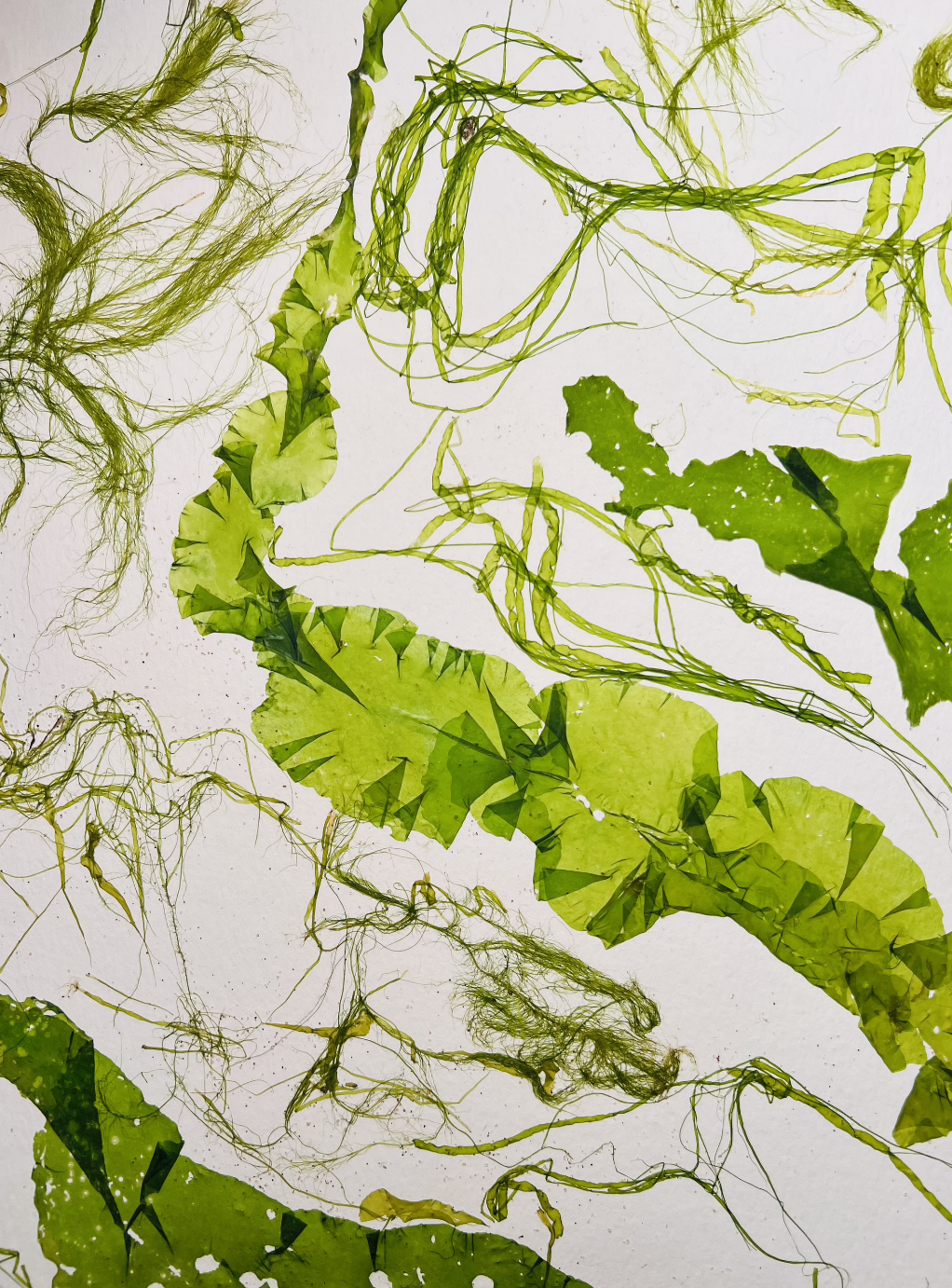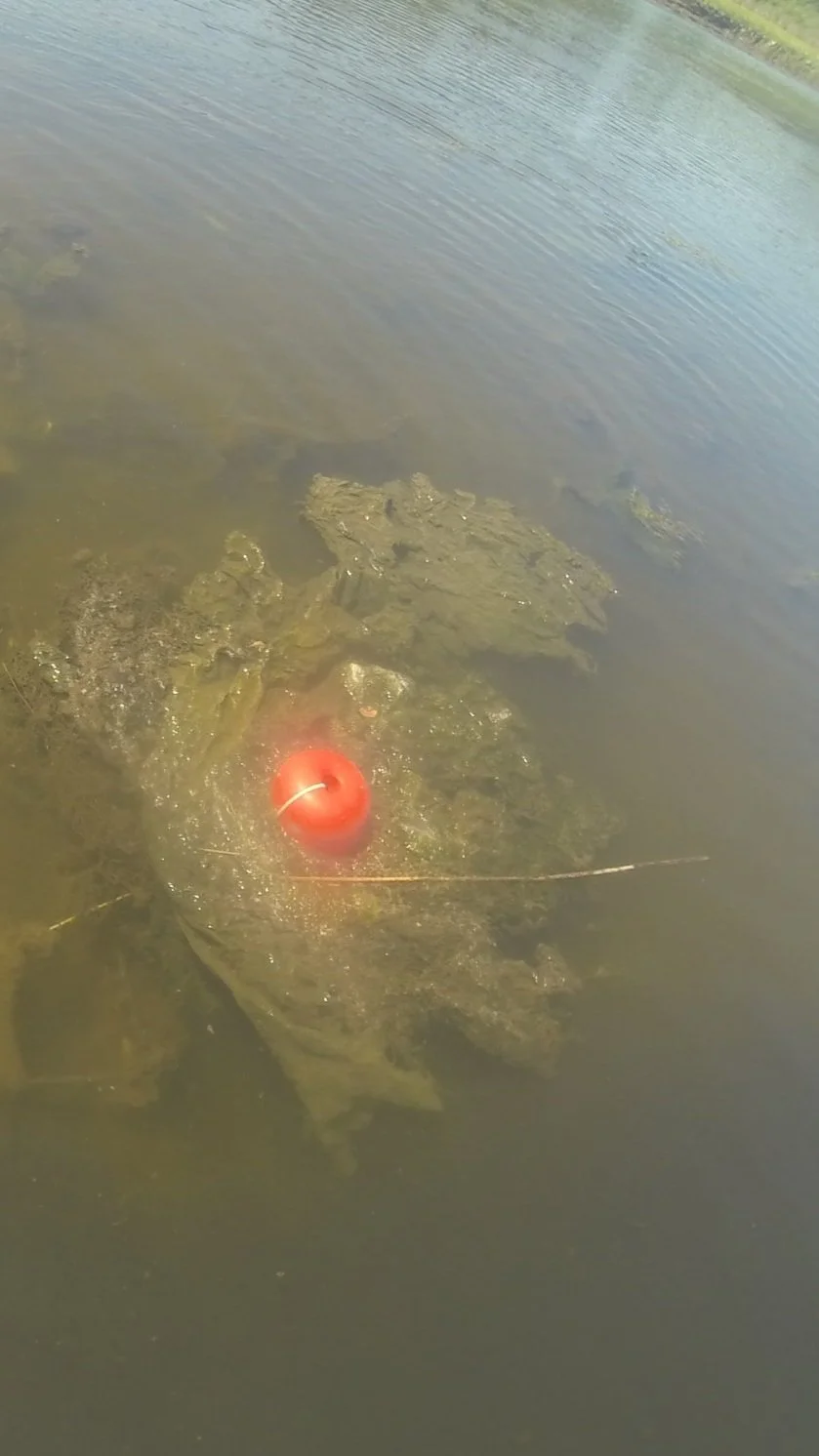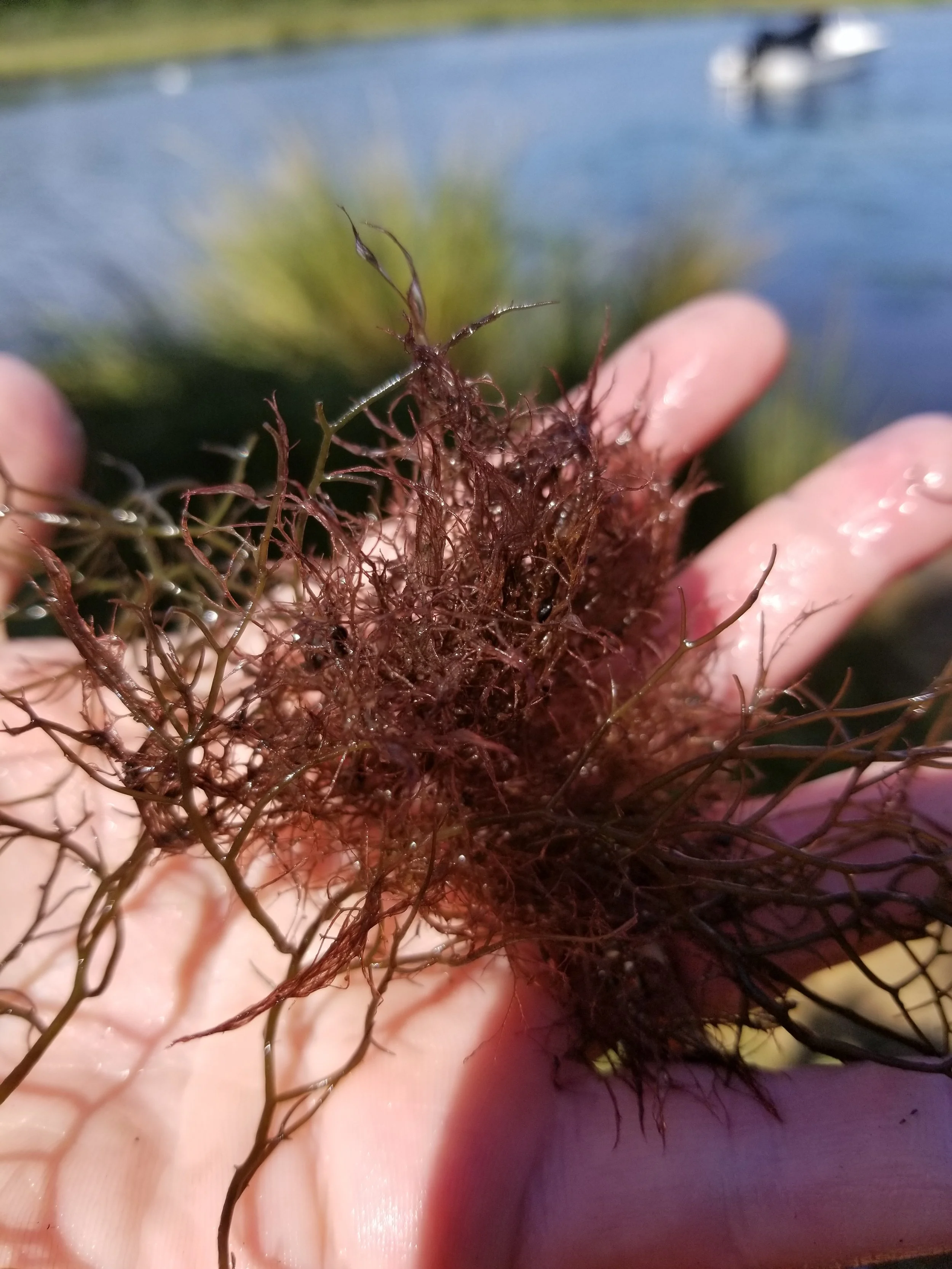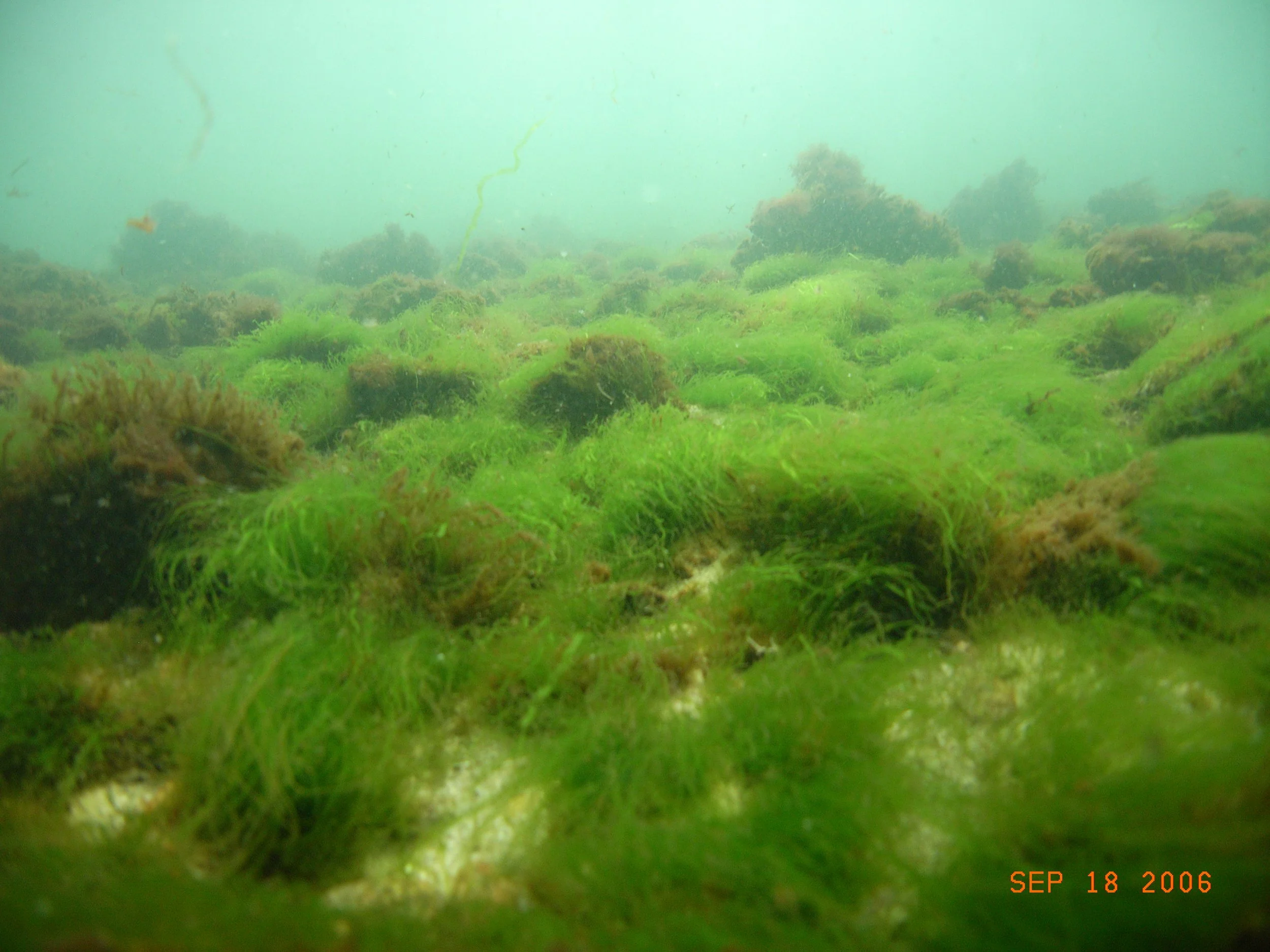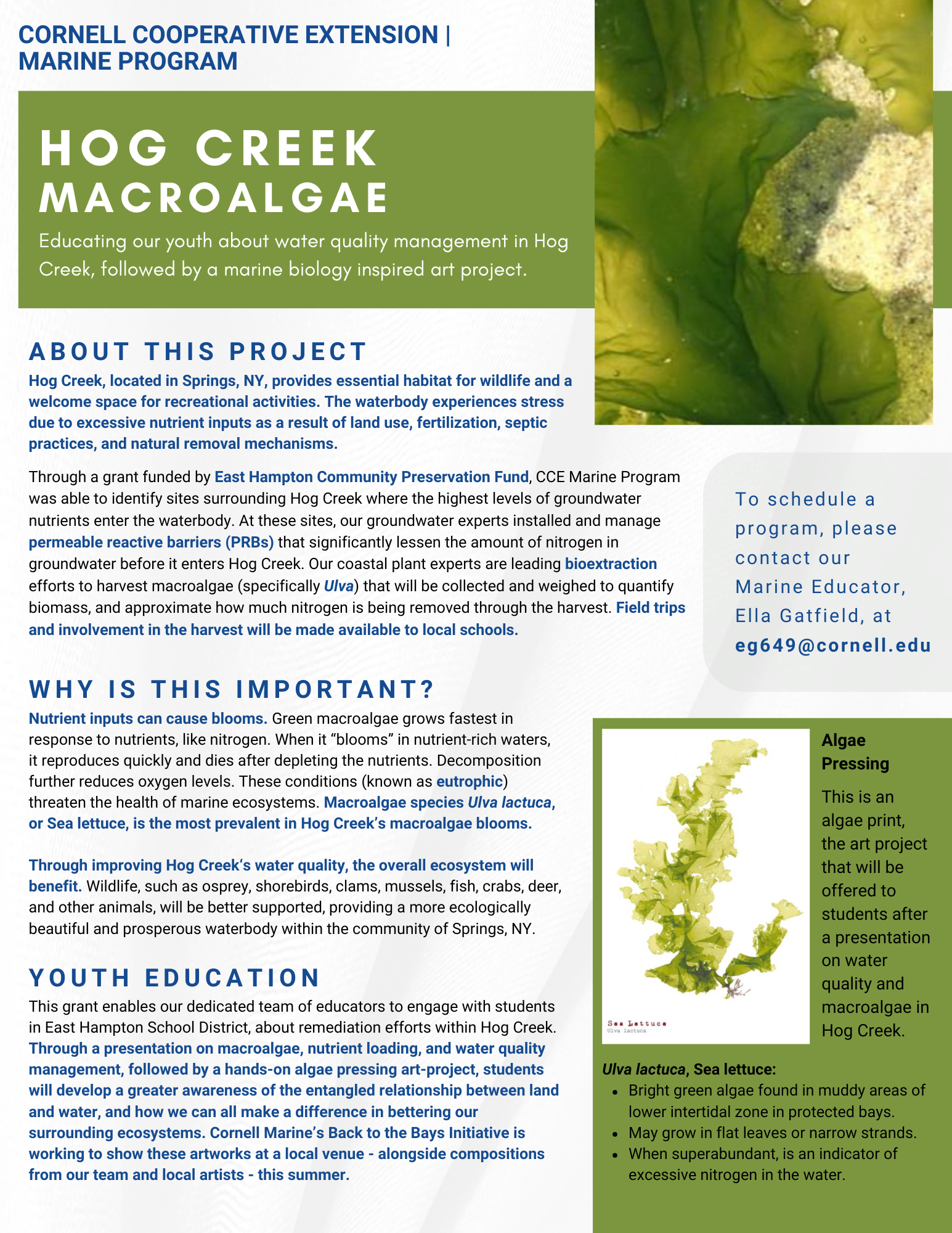Macroalgae
Seaweeds (a.k.a. – macroalgae) are a diverse group of algae represented by a wide range of growth forms. In general, seaweeds are divided into 3 groups based on their color, green, brown or red, though colors range greatly.
While seaweeds share some characteristics of “higher” plants, they lack the complex reproductive structures (flowers) and specialized functional tissues (roots, stems, and leaves) of seagrasses and land plants. Seaweeds reproduce asexually (vegetative growth) and sexually (release of spores).
Algal Blooms
Excessive nutrient inputs - like nitrogen - can cause algae blooms. Green macroalgae grows fastest in response to an overabundance of nutrients. The macroalga species Ulva lactuca, or Sea lettuce, is one of the most common macroalgae species to cause blooms. When it “blooms” in nutrient-rich waters, it reproduces quickly, fragments and continues to grow until it outcompetes itself, creating a “mat” on the bottom which begins to decompose. The decomposing macrolagae reduces oxygen and releases nitrogen back into the waterbody, continuing the cycle. These conditions (known as eutrophic) threaten the health of marine ecosystems.
Donate
Related Blog Articles
Upcoming Events
Current Projects
Hog Creek Macroalgae Removal
Made possible by East Hampton Town’s Community Preservation Fund (CPF). The CPF grant supports our remediation effort in Hog Creek, reducing groundwater nitrogen inputs. Located in Springs, Hog Creek provides essential habitat for wildlife and a welcome space for recreational activities.
CCE Marine Program identified sites surrounding Hog Creek where the highest levels of groundwater nutrients enter the waterbody. At these sites, our groundwater experts installed and manage permeable reactive barriers (PRBs) that significantly lessen the amount of nitrogen in groundwater before it enters Hog Creek. Our coastal plant experts are leading bioextraction efforts to harvest macroalgae (specifically Ulva) that will be collected and weighed to quantify biomass, and approximate how much nitrogen is being removed through the harvest. Field trips and involvement in the harvest will be made available to local schools.
CCE + Macroalgae
Past Projects
-
CCE completed a macroalgae bioextraction pilot project in Accabonac Harbor in 2018. Results varied, with the most growth and largest harvests over groundwater seepage points.
-
Coming Soon
-
Coming Soon
